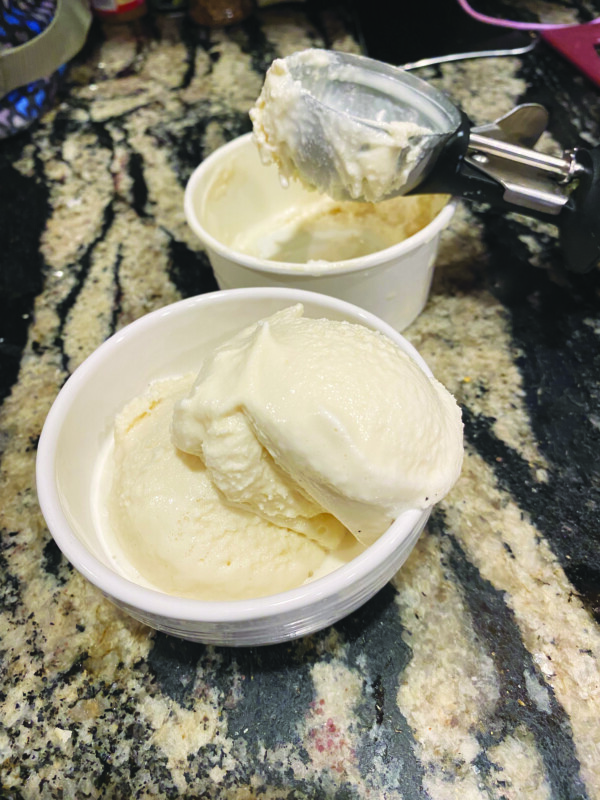If you’ve ever gotten ambitious with your cooking or baking and have tried to share something new that you’ve made with friends or acquaintances, you’ve probably seen a visible reluctance on their faces to take the food you’ve offered.
“It’s OK, I’m fine,” they’ll say.
“I didn’t ask if you are fine,” you might say, if you weren’t restrained by politeness. “I asked you to accept this gift of food that I made myself, as a symbol of how much I like and value you.” But you don’t, and at the end of the day you end up bringing your miso brownies back home with you.
The frustrating fact is that most people don’t want interesting food. They want comforting food.
Here is a really interesting food that — assuming you can get them to try it — will become their new comfort food:
Charcoal-Grilled Corn Ice Cream
- 6 leftover corn cobs from eating fresh sweet corn
- 1 quart (946 ml) half & half
- 1 14-ounce can sweetened condensed milk
As ice creams go, this one is remarkably straightforward. You don’t have to worry about tempering egg yolks, or melting chocolate in a double boiler, or ordering Bolivian bee pollen, or anything. There are three ingredients, and four or five steps, and the level of technical knowledge involved is about the same as in making a grilled cheese sandwich. The most daunting part of making this ice cream is deciding to do it.
Whisk the cream and condensed milk together and pour it into a medium-sized airtight container. Snap the lid on, and store this in the refrigerator.
Set up your grill, light the charcoal, and get your grilling equipment — a plate, tongs and a beer — ready. Wait until the coals are roughly half gray, half black, then grill your corn cobs. Treat them like you would sausages; turn them from time to time, until they are consistently grilled — golden brown, with just a little bit of char. This should take just about long enough to drink your beer. If you are a fan of grilled foods with a heavy char, leave the cobs on the grill a few minutes longer. Remove them to the plate, and take them back into your kitchen.
(It would be a shame to waste the still perfectly good coals, so you might want to grill some actual sausages or Almost Burgers at this point.)
Put the grilled corn cobs in your cream mixture. Completely cover them with liquid, if possible. If not, put the top back on, and swirl to completely cover the cobs. Return the container to the refrigerator to rest for 24 to 48 hours, swirling occasionally. The fat in the cream is really good at absorbing flavors. Remember that time the butter tasted funny after your brother-in-law left mackerel in the fridge after his fishing trip? Same concept. The corn and smoke flavors of your grilled corn cobs will infuse into the cream. Because this is going on in your refrigerator, you don’t have to worry about gently heating the cream or anything. Shake it and leave it.
After the cream mixture has infused for a couple of days, remove the cobs from the container. There will be suspiciously less cream left than you think there should be. Everything delicious comes at a price. In this case, the corn cobs have absorbed some of the cream as a sort of souvenir. If there are any distressing bits of char in the cream, strain it through a fine-mesh strainer.
Churn the mixture in your ice cream maker until it has pulled together into a stiff, soft-serve consistency, then transfer it to freezing containers, and harden it off for a day or so in your freezer.
While this looks like vanilla ice cream, it is very much its own thing. It is sweet and slightly smoky, with a rich, corny aftertaste. You wouldn’t think that sweet and smoky would go together, but grilled peaches or pineapples are delicious, to say nothing of barbecue sauce, so it shouldn’t be surprising how delicious this is. If you wanted to complicate things, you could top it with a spoonful of lime marmalade (lime goes extremely well with smoke and corn) but one of this ice cream’s biggest assets is its delicious simplicity.
And , of course, how interesting it is.
Featured Photo: Photo by John Fladd.






